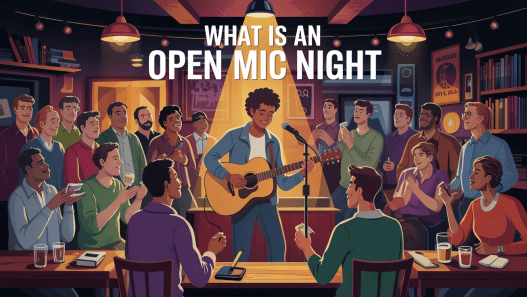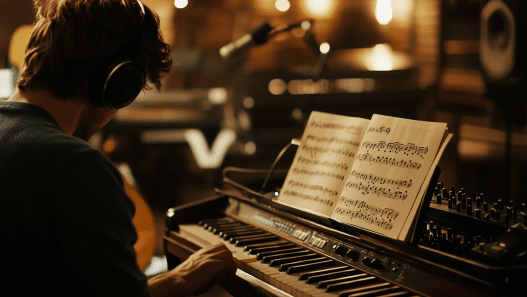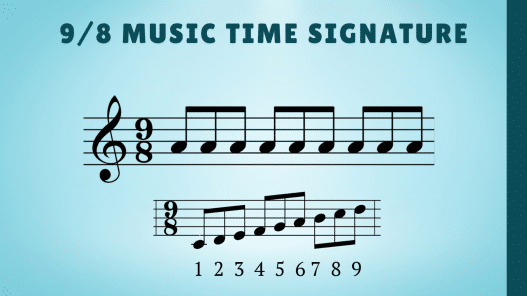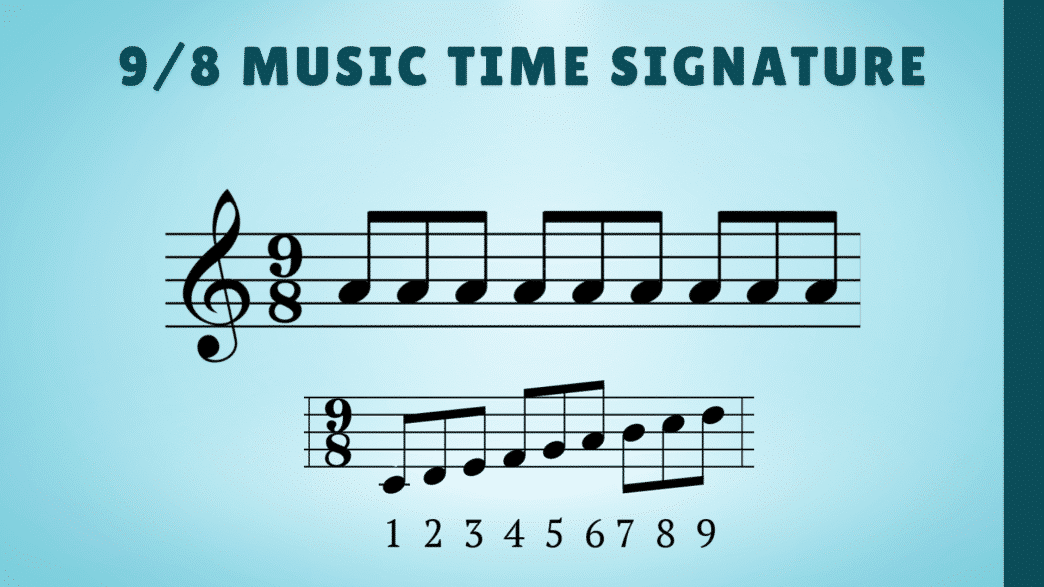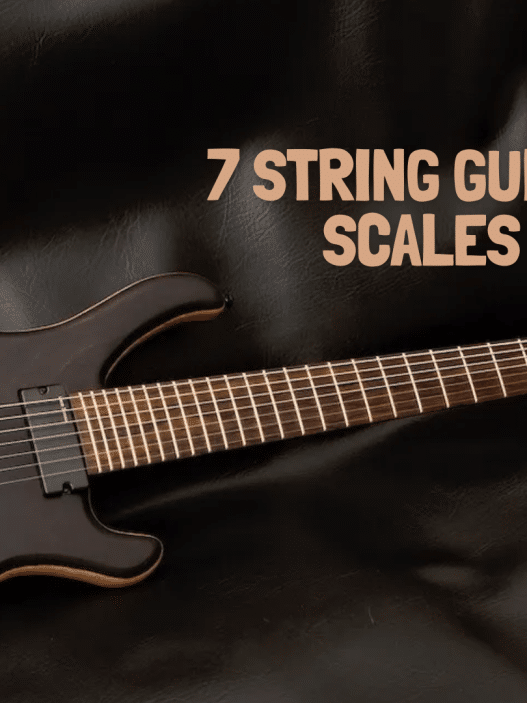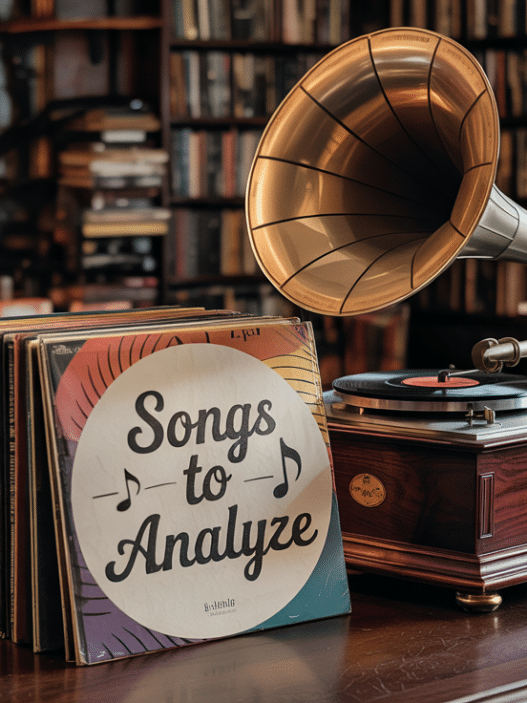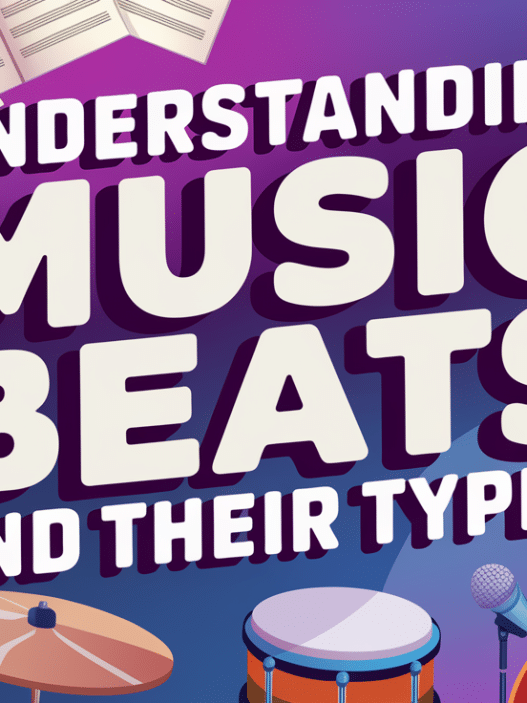Music has its own secret language. Behind your favorite songs hide patterns that make your foot tap and your heart beat – sometimes in ways you don’t even notice.
Among these hidden codes, the 9/8 time signature stands as one of the most engaging yet misunderstood.
What makes certain songs feel like they’re dancing to their own rules? Why do some melodies seem to float and swirl in a way that’s hard to pin down?
The answer often lies in this curious counting pattern that’s been captivating musicians and listeners for centuries.
Join us as we unlock the mystery of 9/8 time – a rhythm that flows differently and creates music that stands apart from the ordinary.
What is the 9/8 Time Signature?
The 9/8 time signature is a musical meter that contains nine eighth notes per measure. This creates a flowing, waltz-like feel but with extra beats that give it a unique character compared to more common signatures like 3/4 or 4/4.
At its most basic level, a time signature tells musicians two important things:
- The top number (9) shows how many beats are in each measure
- The bottom number (8) tells us that an eighth note gets one beat
When looking at 9/8, we’re counting nine eighth notes in every measure. This might seem odd at first, but it works beautifully in many musical contexts.
How 9/8 Differs From Other Time Signatures?
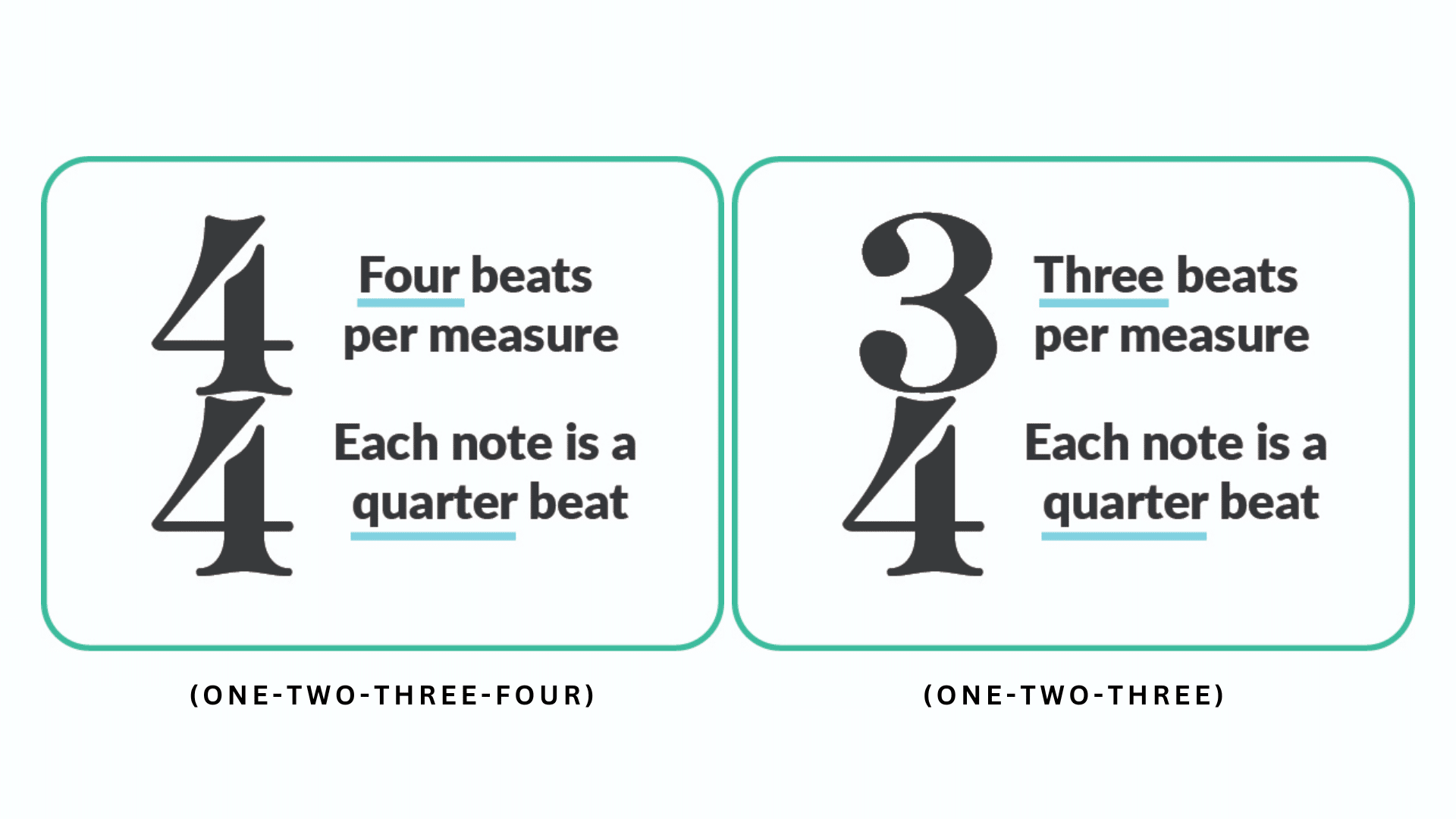
What makes 9/8 stand out from other time signatures is its compound nature. While simple meters like: 2/4 or 3/4 have beats that divide naturally into two parts, compound meters like 9/8 have beats that divide into three.
In practice, 9/8 is often felt as three groups of three eighth notes (3+3+3). This gives music written in 9/8 a rolling, swaying quality that’s different from the more straightforward march of 4/4 or the simple swing of 3/4.
For comparison:
- 4/4 time: Four quarter notes per measure (feels like: ONE-two-three-four)
- 3/4 time: Three quarter notes per measure (feels like: ONE-two-three)
- 9/8 time: Nine eighth notes per measure (feels like: ONE-two-three-FOUR-five-six-SEVEN-eight-nine)
Visual Representation of the 9/8 Meter
To help show how 9/8 works, let’s look at how it might be counted visually:
ONE two three | FOUR five six | SEVEN eight nine
1 & a | 2 & a | 3 & a
Each main beat (1, 2, 3) contains three eighth notes. The first eighth note of each group gets the strongest accent, creating that distinctive triple-pulse feeling.
This grouping structure is what gives 9/8 its distinctive flow. When you listen to music in 9/8, you’ll notice this three-part structure within each measure, creating a captivating rhythm that feels both balanced and slightly off-kilter at the same time.
Unlike signatures with even numbers of beats, 9/8 creates tension and movement through its odd-numbered grouping. This makes it perfect for music that needs to convey a sense of forward motion or gentle complexity.
Counting in 9/8
Learning to count in 9/8 time helps musicians keep track of this unique rhythm pattern. The key is understanding its natural grouping into three sets of three eighth notes.
1. To count 9/8 time properly, break down each measure into three groups of three:
ONE-two-three-FOUR-five-six-SEVEN-eight-nine
2. You can also count it as:
1-&-a-2-&-a-3-&-a
In this method, the numbers (1, 2, 3) are the main beats, while “&” and “a” represent the second and third eighth notes in each group.
Importance of Recognizing Strong Beats:
- Creates the characteristic triple-pulse feeling
- Helps musicians stay together when playing
- Makes it easier to maintain proper timing
- Guides correct phrasing and musical expression
9/8 as a Compound, Triple Time Signature
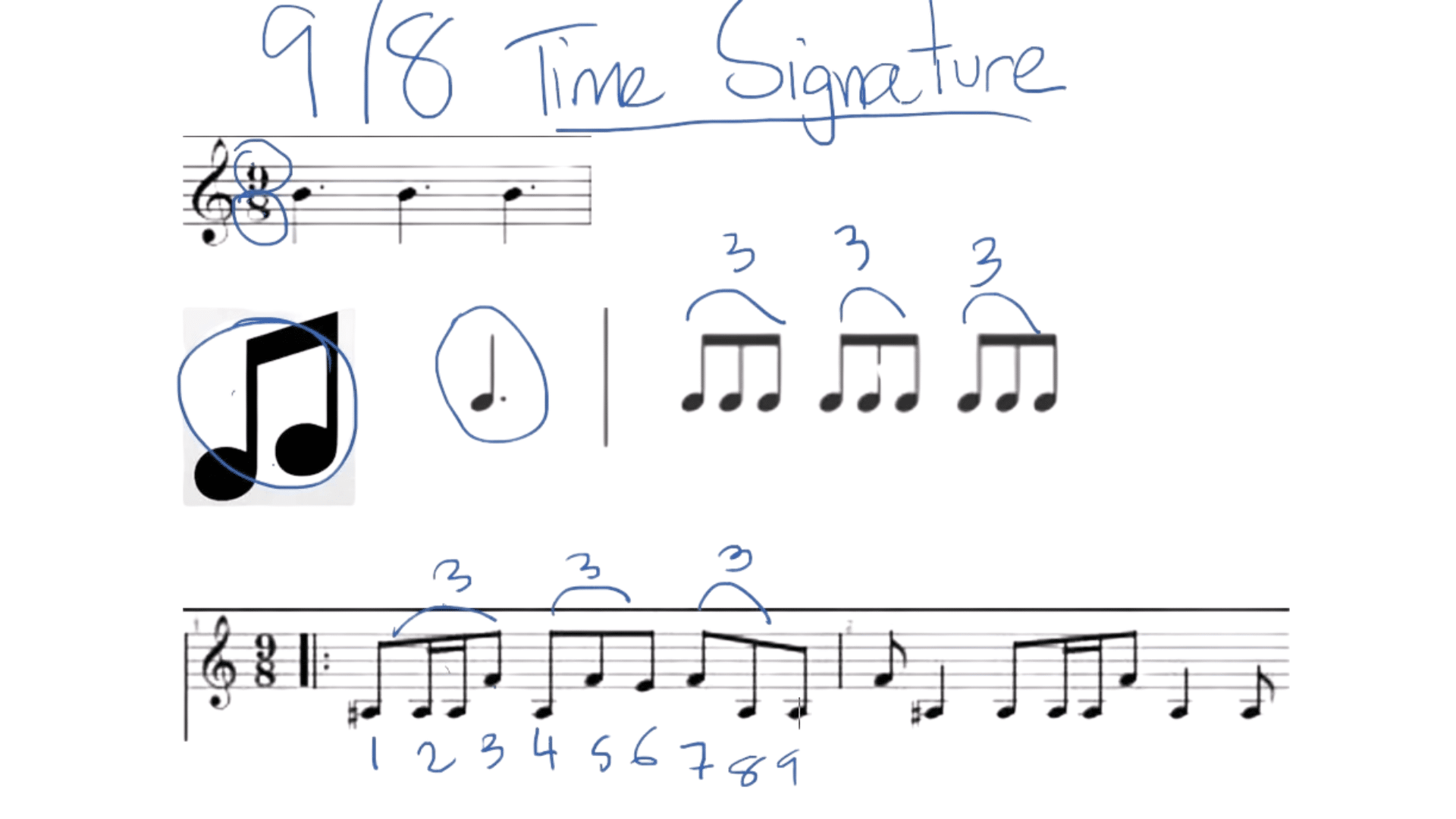
Understanding the classification of 9/8 helps explain its unique rhythmic feel and how it functions in music.
1. Explanation of Compound vs. Simple Time Signatures
Simple time signatures divide each beat into two equal parts, while compound signatures divide beats into three equal parts:
| Simple | Compound |
| Each beat splits into 2 parts (like 4/4, where a quarter note divides into 2 eighth notes) | Each beat splits into 3 parts (like 9/8, where each dotted quarter note divides into 3 eighth notes) |
This three-way division gives compound meters their flowing, rolling quality.
2. Why 9/8 is Considered a Compound, Triple Time Signature
9/8 is compound because each main beat divides into three eighth notes. It’s triple because it contains three of these compound beats per measure:
- 9 eighth notes total
- Grouped as 3 main beats
- Each main beat contains 3 eighth notes (3+3+3)
This structure makes 9/8 both compound (beats divide by 3) and triple (3 beats per measure).
3. The Role of Dotted Quarter Notes in 9/8 Time
Dotted quarter notes play a crucial role in 9/8 time:
- A dotted quarter equals 3 eighth notes
- Each main beat in 9/8 lasts for one dotted quarter note
- Conductors often conduct 9/8 using 3 beats, with each beat lasting a dotted quarter note
- Counting “ONE-two-three” matches a single dotted quarter note
This relationship between dotted quarters and the 9/8 pattern creates the signature lilt and flow that makes this time signature so musically rich.
Famous Songs in 9/8
The 9/8 time signature creates a distinctive rhythmic feel that many artists have used to craft memorable songs across various genres. Here are some notable examples:
1. Blue Rondo à la Turk
Blue Rondo à la Turk by Dave Brubeck Quartet stands as one of the most famous examples of 9/8 time in jazz.
The piece begins with a fast 9/8 pattern grouped as 2+2+2+3, giving it a distinctive off-kilter feeling before transitioning to sections in 4/4 time.
2. Golden Brown
Golden Brown by The Stranglers features an interesting harpsichord introduction and verses in 9/8 time, alternating with choruses in 6/8.
This creates the song’s memorable, lilting quality that helped make it a hit in the early 1980s.
3. Tom Sawyer
Tom Sawyer by Rush includes sections in 9/8 time, showcasing the band’s mastery of complex time signatures. Neil Peart’s drumming particularly shines in navigating these rhythmic challenges.
4. The Crunge
The Crunge by Led Zeppelin experiments with 9/8 time, creating a funky, unusual groove that was inspired by James Brown but with a distinctive rhythmic twist.
5. Chandelier
Chandelier by Sia includes rhythmic variations that give portions of the song a compound feel similar to 9/8, especially during the pre-chorus sections.
The versatility of 9/8 time shows how this seemingly complex time signature can work across many musical styles, from progressive rock to pop, creating songs that feel both familiar and uniquely engaging.
The Unique Appeal of 9/8 Rhythm
The 9/8 time signature creates a musical landscape with a special magic – a rhythm that feels both familiar and surprising at the same time, inviting listeners into its distinctive three-part flow.
The Cultural Significance of 9/8 in Various Genres
9/8 time appears across musical traditions worldwide. Classical composers use it for flowing, pastoral sections. Jazz musicians find it perfect for complex improvisation.
Progressive rock bands use 9/8 to break free from standard patterns, while electronic producers create unexpected dance grooves with it.
Its Use in Folk Music
This time signature has deep folk roots globally. Turkish Karsilama uses 9/8 with a 2+2+2+3 grouping. Irish slip jigs gain their skipping quality from 9/8 time.
Greek and Balkan dances feature 9/8 patterns passed down through generations, connecting modern performers to ancient traditions.
How Dancers and Musicians Interpret the Rhythm Differently
Musicians often focus on precise counting and technical aspects of 9/8, while dancers translate it into physical motion.
Musicians might emphasize different beats for musical interest, while dancers use the strong beats to structure their movements. This creates a rich dialogue between sound and motion, with each informing the other through the unique pulse of 9/8 time.
Final Notes on 9/8 Time
The 9/8 time signature stands as one of music’s most engaging rhythmic tools. From folk tunes across the globe to modern pop hits, 9/8 creates that special flow that makes songs stick in your mind and move your body in unexpected ways.
We’ve walked through how 9/8 works, why it feels different from common time signatures, and how it appears in various musical styles. This knowledge opens new doors to how you hear and feel music around you.
Next time you listen to your playlist, pay attention to songs that seem to move with an unusual swing or pulse – you might spot 9/8 at work!
Want to go deeper into musical time signatures? Leave a comment below with your favorite 9/8 song.


